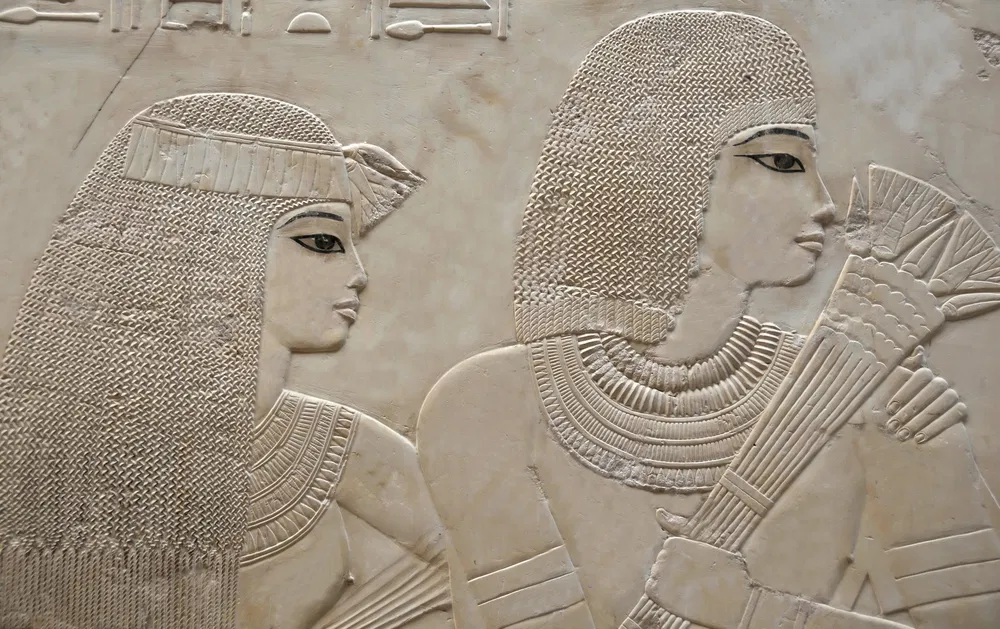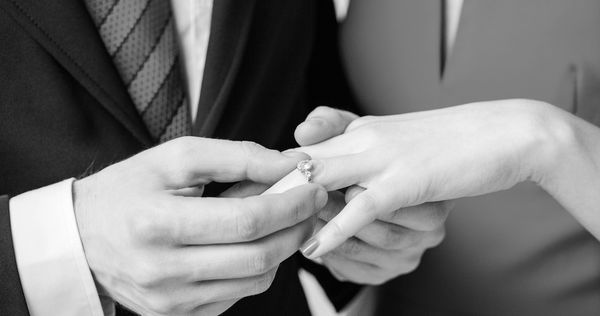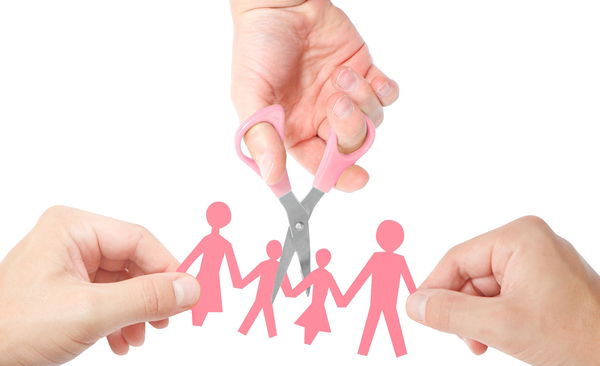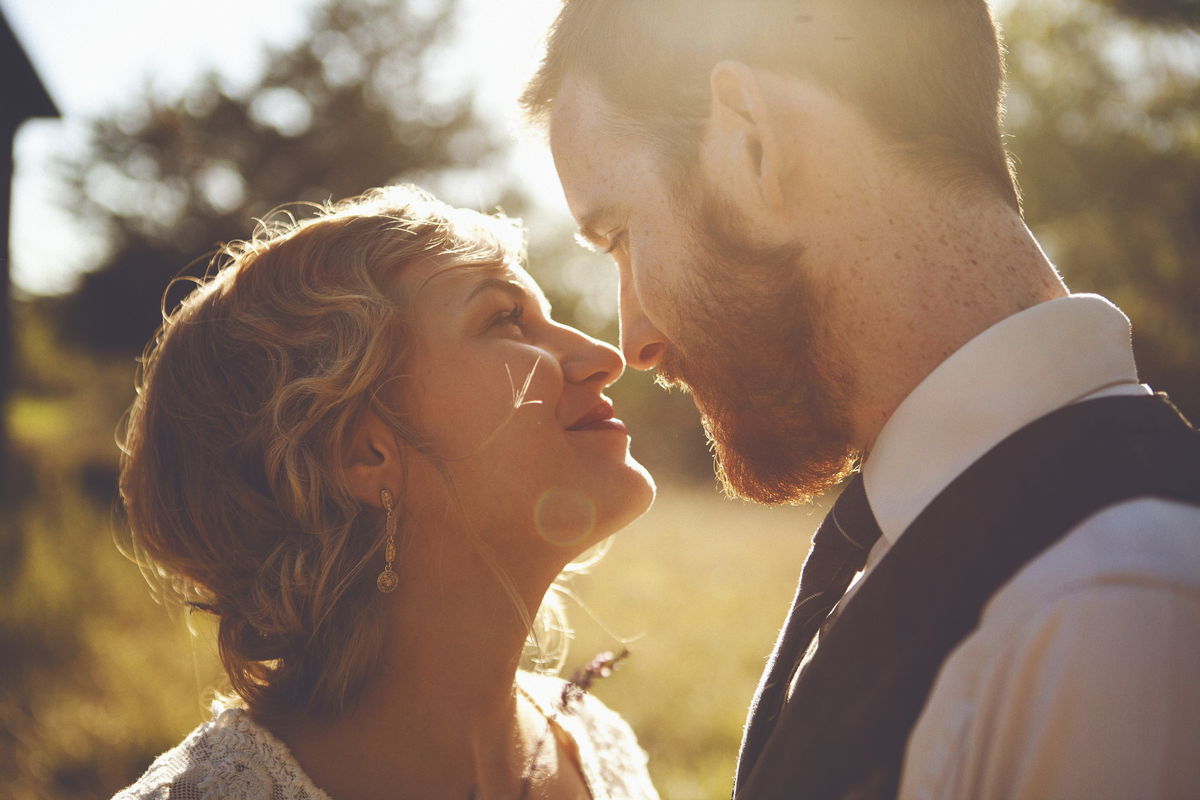Highlights
- Don’t tell the ancient Egyptians that moderns invented marital love. Post This
- Claims that love in marriage is a modern phenomenon are grossly over-simplified. Post This
- All the surviving accounts that discuss the motivations for marriage in ancient Egypt prioritize love over politics or utilitarian concerns. Post This
Several years ago, my local museum featured a travelling exhibition of objects from Egypt and the Mediterranean on loan from the Museum of Fine Arts in Boston. At the entrance to the exhibit was a giant doorway. Displayed on the doorway stood the imposing figure of the Old Kingdom official Mehu. Behind him stood his wife, Khenti, with one hand on his shoulder and the other on his arm in a touching, affectionate gesture. To the modern viewer, the wife’s affection could seem unreciprocated. In the inscription above them, however, the husband calls her “his wife, whom he loves.”
If this were the only example of love between a husband and wife from the ancient world, it would be remarkable. Such displays of affection, however, are commonplace. The current homepage of the website for the Ägyptisches Museum of the University of Leipzig features the statue of Iaib with his wife, Chuaut. From the front, it looks as though she is simply standing behind him, but from the back one can see her arm lovingly resting on his shoulder. Such depictions may be found in almost any historical depiction of a married couple. All one needs to do is look.
But looking at the ancient world is not something that many modern people are inclined to do. The popular author, Stephanie Coontz wrote an entire book published in 2005 on the history of marriage for a popular audience. In it, she develops the claim that love in marriage is a completely modern phenomenon. According to Coontz, before the 18th-century, marriage was strictly utilitarian or political. She was quoted in a recent Deseret News article as saying: “For most of history, marriage was not about love. It was considered antisocial to disobey parents’ wishes and marry for love.” The Coontz thesis of marriage is that the modern invention of marital love, while creating the potential for more satisfying unions compared to the distant past, has played a major role in destabilizing those unions.
Everyone is entitled to their own opinion, and she does surface some important issues about modern marriage. But her thesis has been widely adopted by many current social scientists and journalists writing about the changing institution of marriage and the state of contemporary marriage. Her book, Marriage, a History: How Love Conquered Marriage, in which she most fully develops her thesis, has been cited in scholarly sources more than 2,250 times. We checked several other important books dealing with the changing institution of marriage by prominent scholars published more than 10 years ago and found nothing approaching that level of impact. (The second closest, at about half the number of citations, was Andrew Cherlin’s The Marriage-Go-Round, which was one of the most important contributions to the field in the last 30 years.) Coontz has been remarkably influential at getting scholars and journalists to embrace the idea that marital love was discovered or invented in the 18th century, and it has created both big problems and bold opportunities ever since.
But don’t tell the ancient Egyptians that moderns invented marital love. One Egyptian story from about 2000 BC concludes that “filling your arms with your children, kissing your wife, and seeing your household is better than everything.”1 Egyptian coffins from the same time period express the desire “for a man’s family to be united with him in the next life.”2
Maybe we are jaded and cynical. Statues and other artwork were meant for display. Maybe the ancient Egyptians were depicting happy and loving marriages simply as a façade. Perhaps husbands' claims that they loved their wives were lies. Even if that were the case, though, and they were somehow falsely showing that the couple loved each other, why would they do that? If displaying affection is merely a matter of ancient social desirability bias, wrongly showing themselves in a more socially desirable position than they actually were, then a loving marriage must have been socially desirable. Even if a couple was not actually as much in love with each other as they depicted themselves as being, displaying themselves as a loving couple meant that society still expected and wanted love in marriage—more than 4,000 years ago.
One might wonder if the love displayed in such images is something that developed over time but was not initially present in the relationship. Perhaps love in marriage was an artefact of the Old Kingdom and in later times it changed. Later marriage documents do not say that the couple were motivated by love to marry. But these are legal texts. Even modern legal marriage documents do not list the motivations to marry. Other texts, however, do provide the motivations behind marriage.
One account, dated about 1,000 years after our Old Kingdom statues and reliefs, discusses a princess who is locked in a tower because her father wished her to make a political marriage to another kingdom. An Egyptian prince travelling under the guise of being an exiled son of a minor official succeeds in wooing the princess. Her father is furious that she wants to marry someone who is not politically connected and wants him put to death, so she threatens to kill herself. The father relents, and they are married.3 This sounds like something out of Grimm’s Fairy Tales except that it is nearly 3,000 years older. The prince could have had the princess simply by being honest about who he really was. He wants her to love him, not his position. She argues for the marriage because she loves him, not because she wants to be in a political marriage, and her father relents. This story says something about Egyptian attitudes, as do the numerous surviving love poems from the same time period.
Skip forward another thousand years, and another Egyptian account discusses a Pharaoh proposing a political marriage for his daughter rather than to the man she loved. But when she agrees to enter a political marriage with a general’s son, her father, the Pharaoh, relents and lets her marry the man she loves because “we loved each other.”4
Marriage, then and now, is a complex and complicated relationship. Numerous factors and motivations enter into the decisions of any party who decides to marry. There may well have been marriages that were partly or wholly for convenience, or politics, or economics. And certainly, history is littered with times and places where marriage was abused for purposes that diminished or destroyed the potential for love. It is telling, though, that all the surviving accounts that discuss the motivations for marriage in ancient Egypt prioritize love over politics or utilitarian concerns.
For the most part, ancient marriages have the same sort of range and multi-faceted nature as modern marriages. Claims that love in marriage is a modern phenomenon are grossly over-simplified and too easily employed to assert an argument that marriage has no fundamental core. These are caricatures of marriage rather than real relationships. It is as true then as it is now. The evidence is all around. Just look for it the next time you are in a museum.
John Gee is the William Gay Research Professor, Asian & Near Eastern Languages at Brigham Young University. Alan J. Hawkins is Professor of Family Life at Brigham Young University.
1. Shipwrecked Sailor -134, in Adriaan de Buck, Egyptian Readingbook (Leiden: Nederlands Instituut voor het Nabije Oosten, 1963), 103.
2. Coffin Text 146, in Adriaan de Buck, The Egyptian Coffin Texts II (Chicago: University of Chicago Press, 1938), 180.
3. P. Harris 500 verso 5/3-7/5, in Alan H. Gardiner, Late Egyptian Stories (Brussels: Fondation Égyptologique Reine Élisabeth, 1932), 3-6.
4. P. Setna I 3/1-7, in Sara Goldbrunner, Der Verblendete Gelahrte (Sommerhausen: Gisela Zauzich Verlag, 2006), Tafel I.













